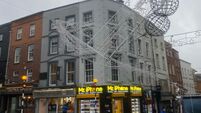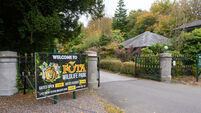O'Connell bridge 'won't be lost to sea'
Rising tides are eating away at Ireland’s most historic landmark – but experts today said there was no danger of O’Connell Bridge falling into the sea.
There were fears the capital’s greatest landmark might collapse after eagle-eyed passers-by spotted cracks in the structure and the neighbouring Butt Bridge.













